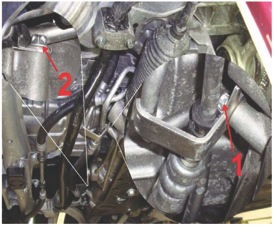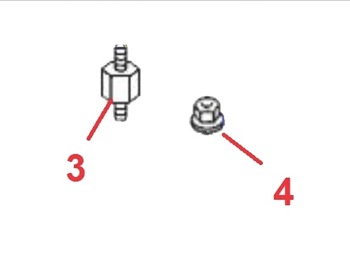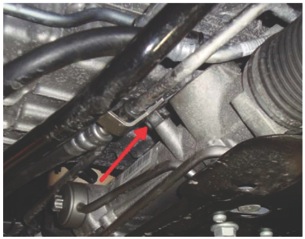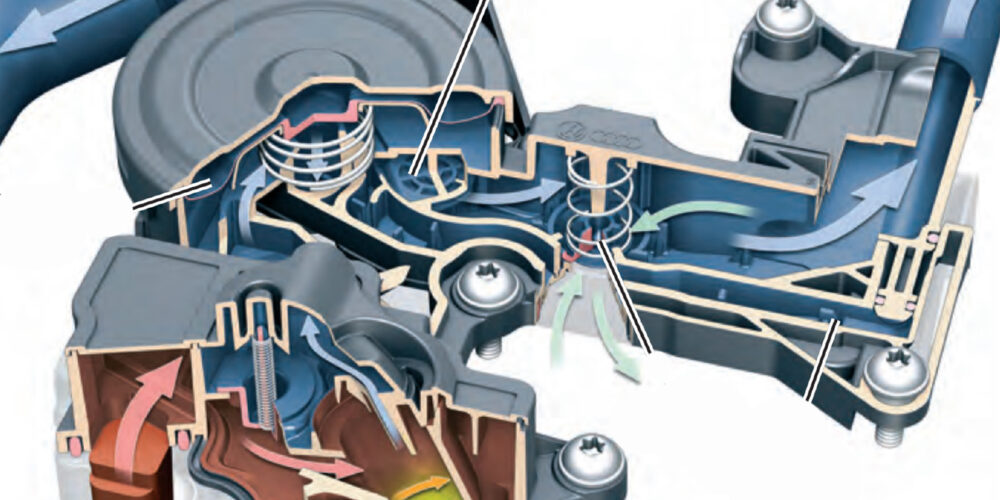If you receive customer reports on Model 209.372/472 vehicles of a groaning noise and vibration felt in the steering wheel at engine speeds between 800 and 2,000 rpm (mostly heard around 1,600 rpm) and with the A/C on, the cause may be the transfer of vibration from the A/C compressor through the high-pressure power steering hose to the steering wheel. To remedy the noise, install a rubber buffer at the high-pressure power steering line to the steering gear bracket as described below.
Note: Noise and vibration frequency might change at the steering wheel end stops and then reduce with the A/C off.
Procedure:
1. Remove the lower engine compartment paneling.
2. Remove the screws (see Figure 1, 1 and 2) from the brackets securing the high-pressure power steering line (power steering pump to the steering gear hose).
3. Gently move the line and install the rubber buffer (see Figure 2, 3) by screwing it into the power steering rack housing (hole after removing the screw 1 in Figure 1).
Note: Do not over-tighten the rubber buffer as the rubber part might tear.
4. Position the high-pressure power steering line bracket onto the installed rubber buffer as  shown in Figure 3 (arrow), and secure it with a nut (Figure 2, 4). Tighten to 10 Nm.
shown in Figure 3 (arrow), and secure it with a nut (Figure 2, 4). Tighten to 10 Nm.
5. Reattach the screw (Figure 1, 2) with the bracket at the other end of the high-pressure power steering line.
Note: Ensure that the high-pressure power steering line does not come in contact with other parts of the vehicle.
6. Reinstall the lower engine compartment paneling as indicated in step 1.
Courtesy of MotoLOGIC® Repair & Diagnostics: www.motoshop.com/motologic.










